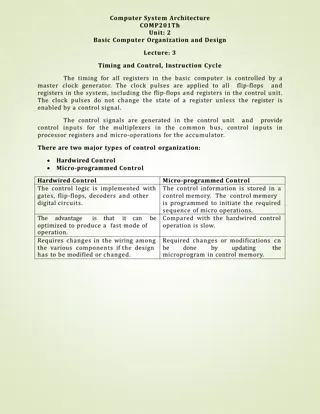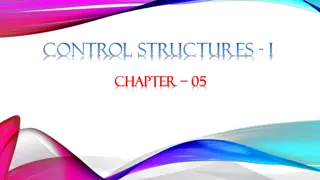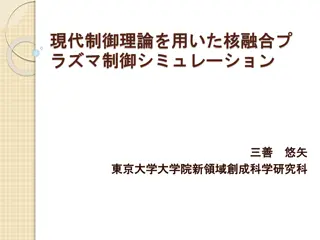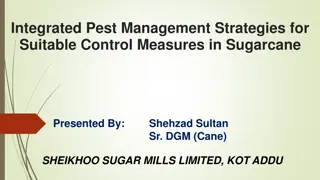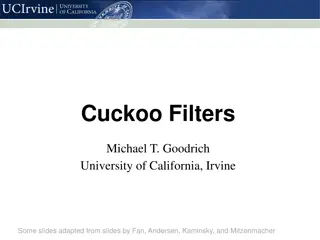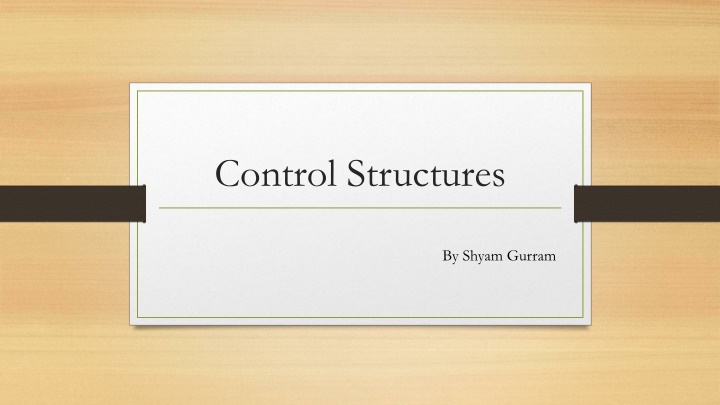
PHP Control Structures by Shyam Gurram
Dive into the world of PHP control structures with Shyam Gurram as your guide. Learn about conditional structures, iterative control structures, and how to effectively use if, if-else, and switch statements in PHP programming. Enhance your skills and make informed decisions in your coding journey.
Download Presentation

Please find below an Image/Link to download the presentation.
The content on the website is provided AS IS for your information and personal use only. It may not be sold, licensed, or shared on other websites without obtaining consent from the author. If you encounter any issues during the download, it is possible that the publisher has removed the file from their server.
You are allowed to download the files provided on this website for personal or commercial use, subject to the condition that they are used lawfully. All files are the property of their respective owners.
The content on the website is provided AS IS for your information and personal use only. It may not be sold, licensed, or shared on other websites without obtaining consent from the author.
E N D
Presentation Transcript
Control Structures By Shyam Gurram
Control Structure In this chapter we have two different types of structures. Conditional Structure Iterative Control Structure. Conditional structure describe the if-then, if-then-else, if-then-else- if-then- else, and switch statements. These structure enable you to make decisions based on single variables or collections of variables.
PHP - The if Statement <?php $t = date("H"); The if statement is used to execute some code only if a specified condition is true. if ($t < "20") { echo "Have a good day!"; } ?> Syntax: if (condition) { code to be executed if condition is true; }
<?php $t = date("H"); PHP - The if...else Statement if ($t < "20") { echo "Have a good day!"; } else { echo "Have a good night!"; } ?> Use the if....else statement to execute some code if a condition is true and another code if the condition is false. Syntax if (condition) { code to be executed if condition is true; } else { code to be executed if condition is false; }
<?php $t = date("H"); PHP - The if...elseif....else Statement if ($t < "10") { echo "Have a good morning!"; } elseif ($t < "20") { echo "Have a good day!"; } else { echo "Have a good night!"; } ?> Use the if....elseif...else statement to specify a new condition to test, if the first condition is false. Syntax if (condition) { code to be executed if condition is true; } elseif (condition) { code to be executed if condition is true; } else { code to be executed if condition is false; }
PHP Switch Statement The switch statement accepts one formal parameter, which should be either an integer, float or string primitive variable. The break statement is required in each case statement to signal that the evaluation has found a match and should exit the switch statement. If there is no break statement in a case, the program will fall through once it has found a match until it runs the default case statements.
<?php $favcolor = "red"; switch ($favcolor) { case "red": echo "Your favorite color is red!"; break; case "blue": echo "Your favorite color is blue!"; break; case "green": echo "Your favorite color is green!"; break; default: echo "Your favorite color is neither red, blue, or green!"; } ?> The PHP switch Statement Use the switch statement to select one of many blocks of code to be executed. switch (n) { case label1: code to be executed if n=label1; break; case label2: code to be executed if n=label2; break; case label3: code to be executed if n=label3; break; ... default: code to be executed if n is different from all labels; }
<?php $i = 1; while ($i <= 10) { echo $i; $i++; } PHP While Statement While loops are the simplest type of loop in PHP. They behave just like their Ccounter parts. The basic form of a while statement is: Syntax:- while ( expression ) { // do something } The meaning of a while statement is simple. It tells PHP to execute the nested statement(s) repeatedly, as long as the while expression evaluates to TRUE. The value of the expression is checked each time at the beginning of the loop, so even if this value changes during the execution of the nested statement(s), execution will not stop until the end of the iteration (each time PHP runs the statements in the loop is one iteration).
<?php $num = 1; do { echo"Execution number: $num<br>\n"; $num++; } while ( $num > 200 && $num < 400 ); ?> Do.. While Statement Do..while loops are very similar to while loops, except the truth expression is checked at the end of each iteration instead of in the beginning. The main difference from regular while loops is that the first iteration of a do..while loop is guaranteed to run (the truth expression is only checked at the end of the iteration), whereas it's may not necessarily run with a regular while . Syntax:- do { // code to be executed } while ( expression );
<?php /* example 1 */ for ($i = 1; $i <= 10; $i++) { echo $i; } /* example 2 */ For Statement For loops are the most complex loops in PHP. They behave like their Ccounterparts. The syntax of a for loop is:. Syntax:- for ($i = 1; ; $i++) { if ($i > 10) { break; } echo $i; } for ( initialization expr1; test expr2; modification expr3 ) { // code to be executed } The first expression (expr1) is evaluated (executed) once unconditionally at the beginning of the loop. In the beginning of each iteration, expr2 is evaluated. If it evaluates to TRUE, the loop continues and the nested statement(s) are executed. If it evaluates toFALSE, the execution of the loop ends. At the end of each iteration, expr3 is evaluated (executed). Each of the expressions can be empty. expr2 being empty means the loop should be run indefinitely (PHP implicitly considers it as TRUE, like C). This may not be as useless as you might think, since often you'd want to end the loop using a conditional break statement instead of using the for truth expression.
<?php echo "<p><b>Example of using the Break statement:</b></p>"; Break statement Break ends execution of the current for, foreach, while, do..while or switch structure. Break accepts an optional numeric argument which tells it how many nested enclosing structures are to be broken out of. for ($i=0; $i<=10; $i++) { if ($i==3){break;} echo "The number is ".$i; echo "<br />"; } ?>





